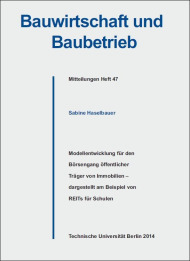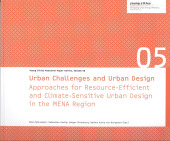Modellentwicklung für den Börsengang öffentlicher Träger von Immobilien – dargestellt am Beispiel von REITs für Schulen

Format: 14,8 x 21,0 cm
Publishing year: 2014
“This paper examines a form of financing and organization that is an alternative to the capital markets through the issuance of REIT shares. Through the securitization of public real estate assets, hidden reserves that are held in the value of the real estate are used. Those reserves serve as an additional source of equity capital. This paper analyzes a model and considers the process of privatization up through listing on the stock exchange. Using a systematic examination, interdisciplinary aspects will be described and evaluated. This will take place within a filter model. A particular challenge can be seen in the multitude of criteria to be considered. Both legal and economic aspects play a role, and partially refer to each other. In a first step (Filter 1), the legal validity will be examined. On the basis of selected fundamental questions of German constitutional law, public legal and civil requirements will be examined in consideration of the law concerning German real estate corporations with publicly listed shares (REITG). In a second step (Filter 2), the economy of the project will be evaluated. Here, the author will take on the new institutional economics (neo-insitutionalism). This concerns a research direction that has different expressions in the form of theories. She will place particular emphasis on the areas of property rights theory, principal agent theory, and transaction cost theory. The main area of emphasis for the observation here is the analysis of the legal construct according to its efficiency, or rather if need be, its existing system-inherent efficiency losses. With the question to be answered whether the establishment of a REIT can be a conceivable financing alternative for the public sector, third parties play a role that could have an influence on the project. Therefore in a third step (Filter 3), an analysis of different stakeholders will be done, as well as an evaluation of the consequences for the project. The findings of this work are intended to provide a classification of “”general feasibility”” as a basis for a further evaluation on the basis of a concrete individual project.”



